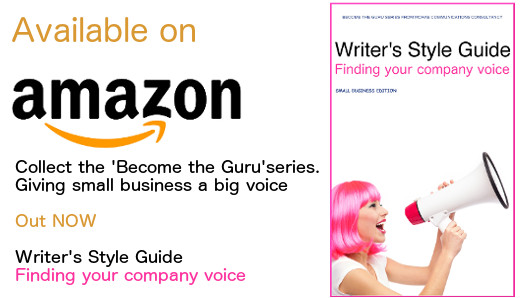 My last post “Does your résumé stand out from the crowd?” looked at the differences between a CV and a résumé, outlined the information required for the different types and provided tips on showcasing your skills. If you followed the advice you should now be in possession of a stand-out résumé. However, if you are about to submit that same résumé for a tender response, you may find you still have a little more work to do.
My last post “Does your résumé stand out from the crowd?” looked at the differences between a CV and a résumé, outlined the information required for the different types and provided tips on showcasing your skills. If you followed the advice you should now be in possession of a stand-out résumé. However, if you are about to submit that same résumé for a tender response, you may find you still have a little more work to do.
I have written 100s of tender responses (or Request for Proposal [RFP] as it’s known in the game). The majority of those have been for Commonwealth, State and Local Government across Australia. I’ve also worked on a host of telecommunications, insurance, financial and banking, publishing, engineering and marketing agency RFPs, so trust me, when it comes to these résumés, I know what I’m talking about. Here are a few pieces of useful information I’ve gleaned over the years.
Don’t underestimate the importance of getting the CV right. Too often this part of the response is left to the last minute. This is, in part, because sections such as the Costings/Quotes or methodology are seen as higher up the list in terms of priority. It also comes down to a lack of resources. If you have only one or two people preparing the submission and the pricing element, corners often have to be cut. There is also a mindset that the résumés stored by HR will do.
When tendering for Government work, they want to know who they will be working with. Tender CVs/résumés and people profiles help build a relationship and trust in your team. They enable prospective clients to find out about your team before they even meet them.
A well-written resume should ALWAYS address the client’s requirements, with information presented in a professional format. This will undoubtedly add value to your bid. A tailored résumé will give you the edge over competitors tendering for the same projects.
If you can show your project team’s experience across similar projects with a targeted profile or CV, the client is more likely to think of you as the team they can work in partnership with.
Golden rule
Ensure you have an understanding of what is required in the actual tender documentation. It’s important to know exactly what your client is looking for and what they expect of the team who win the bid process.
A tender can be won or lost on the ‘What’s in it for the client?” question, so link everything back to what the client gets from your skill set. It’s not just a case of submitting generic information about what you or your company can do or a list of previous roles.
Tips for writing winning résumés in the tender process
- If your company has the resources, allocate someone to manage the process. When creating résumés for tenders I will generally interview everyone on the team to ensure all their information is up-to-date and accurate. It also helps when someone is able to guide the focus on key skills as they relate to the response. Since everyone still has their day job to do when the tender process is going on, outsourcing this task has its benefits.
- Use a template so all résumés are consistent in terms of look, feel and information provided.
- One of the golden rules of any form of writing is to remove all barriers to understanding. This should also be the case with your résumé. With this in mind, I would always start with the name, followed by position on the project team, followed by a snapshot of your area of expertise and how that expertise will maximise the potential of the client’s key project outcomes. These three areas at the start should provide an ‘at a glance positioning’. I would also encourage the use of a photograph, similar to something you would use on LinkedIn (as opposed to Facebook).
- I then suggest providing a few sentences under the header of Background, where you include information such as how many years you’ve been in the industry and whether you have experience overseas. Look at the depth and breadth of your expertise and sum it up in a few lines.
- Focus on what is required in your specific role as part of the winning tender team. Tenders are set out in Sections, each relating to a specific requirement of the project. If you are the Environmental Officer at work and you are taking an environmental lead role in the project you need to be across all aspects of the environmental requirement for the client.
- Make sure you talk about a notable project you’ve been involved in that aligns with the requirements of the RFP. Talk about your role within the project and the project outcome. Was it delivered a week ahead of schedule? Did you implement innovative cost-cutting processes that provided significant savings? Is the client looking for new approaches to a complex project? Can you show how you’ve developed a new approach that was successfully implemented?
- Try not to simply list a host of projects or get bogged down in the details of an unrelated project – unless you have no other example. If that’s the case you must then show how your role in this project is comparable. Generally, you should leave out unrelated information. It’s tempting to want to show the client all the things you’ve done but in all honesty, they only care about your ability to do the job they’ve scoped out in the RFP.
- List your key strengths and tie them to the requirements of the RFP. Remember always to think of the value-add you’re offering to the client if they select your company’s bid. Identify whether themes such as innovation, partnership or leadership are highlighted in the RFP, then aim to demonstrate these qualities in your résumé.
- Don’t be shy about listing Awards you’ve received or publications you’ve authored. This sets you up as an expert in your field.
- Testimonials are useful too, however, not everyone has those readily available. In the interest of keeping résumés consistent and below a specified word-count, I would be inclined to leave these out – unless everyone in the team was able to provide one.
 Send to Kindle
Send to Kindle

